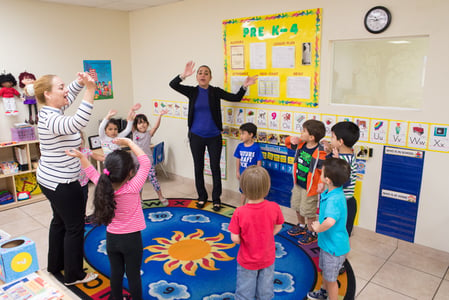
Following the children’s lead and balancing time within the classroom schedule between child-directed and educator-directed activities are not uncommon for those responsible for children’s learning in early education classrooms. Intentional educators are aware of their responsibility to assess student progress, understand skill mastery and plan accordingly to provide opportunities for children to expand their understanding of ideas and concepts important to early childhood development. However, many times, as educators prepare to begin a specific educator-directed activity, it is unsettling when children begin to veer from the step-by-step plans the educator has worked hard to implement.
Defining Regard for Child Perspectives (RCP)
Regard For Child Perspectives (RCP) as defined by CLASS is “the degree to which the educator’s interactions with children and classroom activities place an emphasis on children’s interests, motivations, and points of view and encourage responsibility and autonomy.” Keywords within this definition that can help educators understand the importance of RSP in all types of interactions are degree, child, and classroom activities. Educators know that joining children’s play during free choice provides easy opportunities to follow their lead and add to the depth of the activity through questions and participation. The same can be said for educator-directed activities. By knowing your children and walking through the activity, anticipating child responses and level of engagement, the educator’s ability for flexibility within the activity and opportunities for child expression of their ideas increases. The degree to which this occurs in educator-directed activities may look different than child-directed activities. However, what this looks like also relies on the understanding of perspective. Defining perspective as a particular attitude toward or way of regarding something; a point of view: true understanding of the relative importance of things; a sense of proportion (New Oxford American Dictionary), demonstrates that perspective involves attitude and regard. So you may be wondering, “What does this look like?”
Scenario 1
Let’s take a look at a typical educator-directed activity. During small groups, the educator has planned to use pictures of animals to have children classify whether the animal is a farm or zoo animal. The educator holds up a picture of a lion, and the children identify it as a zoo animal. The educator holds up a picture of a horse, and the children identify it as a farm animal. The educator continues until all the animals have been identified. Some children start making animal sounds, and the educator immediately asks the children to stop with a statement such as, “We are only deciding where the animals live, not making noises!” The children comply and continue. Leading the activity in this way, the educator sticks to their agenda, accomplishing the goal of classification of the animal types. However, she shows little flexibility or student focus, one of the indicators for this dimension.
Scenario 2
Taking this same activity, an educator can increase the degree of RCP while still meeting the goal.
This time, the educator tells the children they are going to look at some pictures of animals and decide whether they live on the farm or in the zoo. The educator passes out a picture to each child and asks them to look at the picture and think about where it lives. She tells the children they will be going to the dramatic play area if they think their animal lives on the farm and to the block area if they think their animal lives in the zoo. As the educator calls on the children to identify their animal, she asks them why they think it is a farm or zoo animal (Flexibility and Student Focus and Student Expression), and the children go to the designated areas, some making animal noises and moving like their animal (Restriction of Movement). One child has a picture of a duck and says, “Zoo.” The educator asks why he thinks the duck should go to the zoo. The child responds that he went to the zoo and there were ducks. The educator tells the child he can decide (Support for Autonomy and Leadership) if his duck is a zoo duck or a farm duck (Flexibility and Student Focus). The child quacks and waddles to the block area (Restriction of Movement). The goal of classification is achieved when there are two groups of children at the end of the activity.
The degree of RCP is increased due to this educator's attitude toward and regard for the importance of child input within the activity. The second scenario provides evidence of all the indicators included in the RCP Dimension!
What does this mean?
Remembering to focus on Regard for Child Perspectives may mean letting go of pre-planned expectations to incorporate ideas offered by students. But, it can also level the playing field when educators take cues from the children's ideas. It sets the stage for child engagement and learning, positive relationships and increases opportunities for effective interactions.
